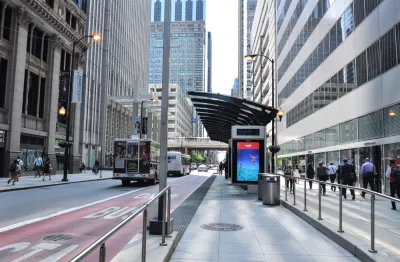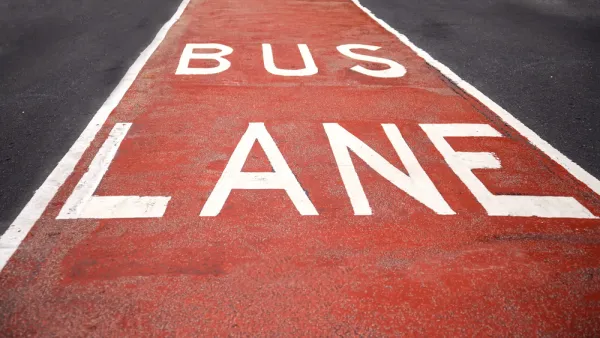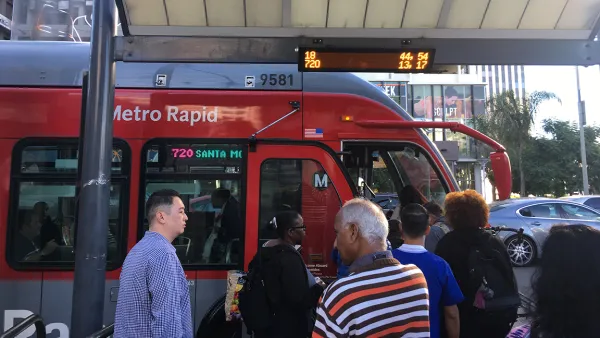A program championed by Chicago Mayor Lori Lightfoot to speed up bus service has new monentum from funding provided by Chicago's new fee on ride-hailing trips.

"In recent months the city has started to follow through on that promise with the CTA and the Chicago Department of Transportation’s $20 million Bus Priority Zones program, which seeks to eliminate bus “slow zones” caused by bottlenecks along the city’s busiest corridors," reports John Greenfield.
The program will eventually pull from a suite of options for improving bus priority on Chicago streets, like "red bus-only lanes, overhead signage, special signals at intersections that give buses a head start before private vehicles get a green light, and/or pedestrian improvements like sidewalk bump-outs."
One such street design feature is already in place on the downtown Loop Link corridor, but Greenfield says modest speed improvements are the fault of lax enforcement. "[Mayor Lori] Lightfoot hopes to help pass state legislation to legalize camera enforcement of bus lanes, which already exists in New York City.
The program is funded with a portion of the revenue generated by Chicago's new ride-hailing fee, approved by the City Council last week.
FULL STORY: Chicago’s Bus Priority Zone program shifts into high gear

National Parks Layoffs Will Cause Communities to Lose Billions
Thousands of essential park workers were laid off this week, just before the busy spring break season.

Retro-silient?: America’s First “Eco-burb,” The Woodlands Turns 50
A master-planned community north of Houston offers lessons on green infrastructure and resilient design, but falls short of its founder’s lofty affordability and walkability goals.

Delivering for America Plan Will Downgrade Mail Service in at Least 49.5 Percent of Zip Codes
Republican and Democrat lawmakers criticize the plan for its disproportionate negative impact on rural communities.

Test News Post 1
This is a summary

Test News Headline 46
Test for the image on the front page.

Balancing Bombs and Butterflies: How the National Guard Protects a Rare Species
The National Guard at Fort Indiantown Gap uses GIS technology and land management strategies to balance military training with conservation efforts, ensuring the survival of the rare eastern regal fritillary butterfly.
Urban Design for Planners 1: Software Tools
This six-course series explores essential urban design concepts using open source software and equips planners with the tools they need to participate fully in the urban design process.
Planning for Universal Design
Learn the tools for implementing Universal Design in planning regulations.
EMC Planning Group, Inc.
Planetizen
Planetizen
Mpact (formerly Rail~Volution)
Great Falls Development Authority, Inc.
HUDs Office of Policy Development and Research
NYU Wagner Graduate School of Public Service





























